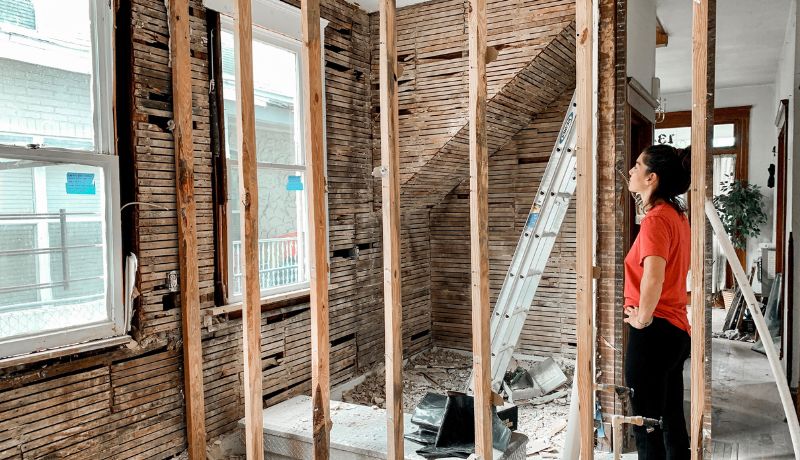These tips can help you to paint the walls of your home which you can do on your own.
Wait for dry weather-
Humidity means drips and slow drying, so avoid painting on a rainy day. If you must paint when itís humid, take your time- and take advantage of slow-drying paint to correct your errors before moving on to the next coat. But donít overwork or it will show when youíre finished.
Do a visual inspection and prep-
Before applying new primer and paint, any cracked, flaking, or peeling areas should be lightly sanded or scraped (and then thoroughly rinsed) because the weight of the new coat will pull the old paint loose. "If you don't tackle that first, you'll just end up wasting your time and money," says Tom Lee, Behr's Senior VP of Consumer Marketing. It's also possible that greasy spots will need to be washed with soap and then rinsed with clean water. Otherwise, wipe down the surface with a damp cloth to ensure that the paint has a clean, dust-free surface to adhere to.
Buy High-Quality Brushes, Roller Covers, and Painterís Tape-
If you're going to spend a lot of money on paint, you don't want to skimp on the application. High-end painter's tape is the real deal when it comes to sealing out drips and blurs, and good brushes and roller covers give excellent coverage so you don't waste time and paint on re-application.
Know your nap-
Because your walls have texture, you'll want a thicker nap on your roller cover so it can reach into crevices and provide complete coverage. If you're painting concrete walls, for example, you'll want to use a thick nap. A thin nap is preferred for drywall, however. If you choose a nap that is too thick, you may end up with texture where you don't want it, so be ready to tell the salesperson what you're painting when you buy your painting supplies.
Protect Anything you donít want to be painted-
You will never be sorry for taking the time to cover your floors, furniture, and hardware before starting a painting project. Drop cloths are a must, and doorknobs can be easily protected with small plastic sandwich bags pinned closure.
Remove Light switch and outlet covers-
You might be tempted to skip this five-minute step if you're impatient, but don't.
Use Primer-
If you already have a clean, smooth surface, paint-and-primer combinations are fine. However, if the wall has any issues or it's been more than eight years since you last painted, bite the bullet and use a separate primer.
Box your paint-
Get a realistic estimate of how much paint you'll really need from the paint salesperson so you can buy it all at once. Then, instead of using one gallon at a time, mix all of the paint together thoroughly in one large container. This is referred to as "boxing" your paint, and it ensures that your color is consistent from start to finish.
Let the roller do the work-
Today's premium paints are easy to apply, and you've already selected a good roller cover (right? ), so you won't need to apply much pressure. Use an extension pole to reach the largest possible area with the least amount of effort ó and without straining your back.
Paint from top to bottom-
Use your roller to apply paint from the ceiling downward after you've cut in your edges at the ceiling and baseboard with a brush. Pros paint right over their mistakes as they work their way down the wall, whereas amateurs often have telltale drips and spatter at the end of a paint job. It's best to leave an area alone once it begins to dry. Reapplying the paint can leave marks and color streaks on the surface. ???????





![Top 5 Best Ways to Create Your Own Cartoon Character [For Non-illustrators] Top 5 Best Ways to Create Your Own Cartoon Character [For Non-illustrators]](https://www.chattycathy.blog/uploads/img/632d545cdf266.jpg)
